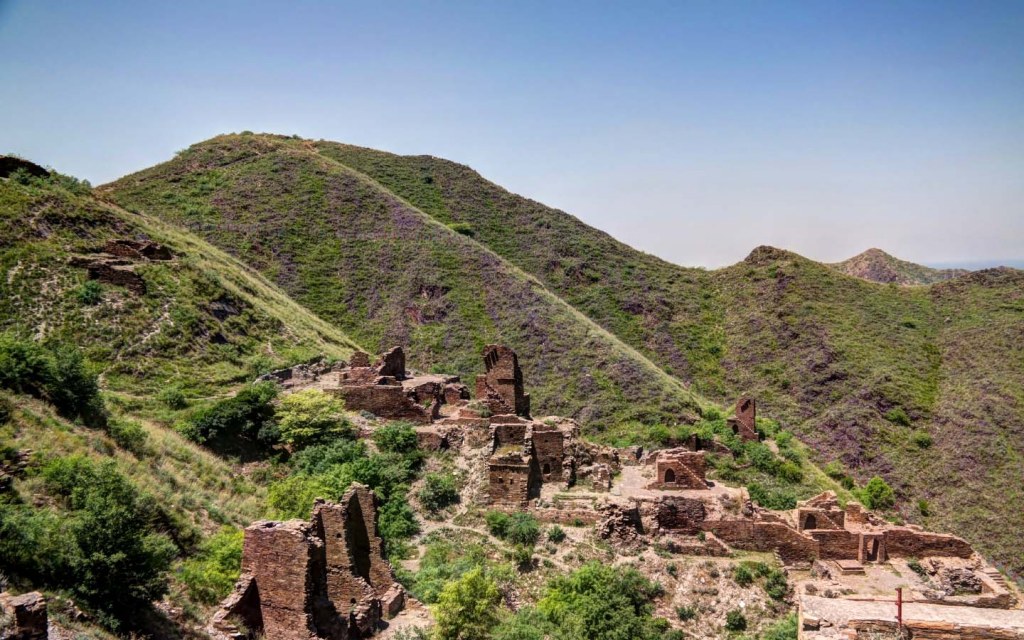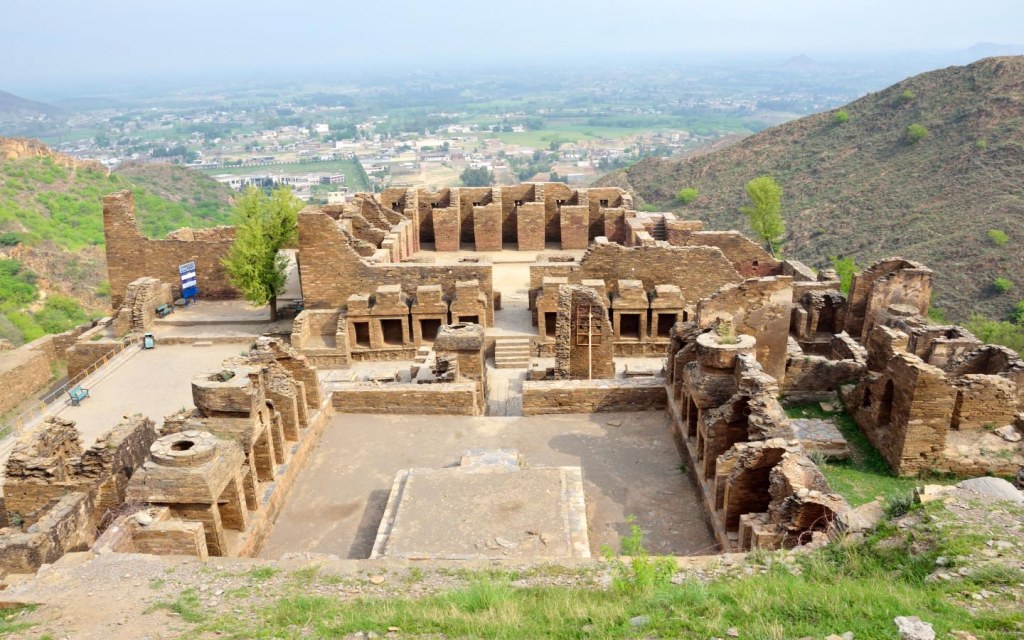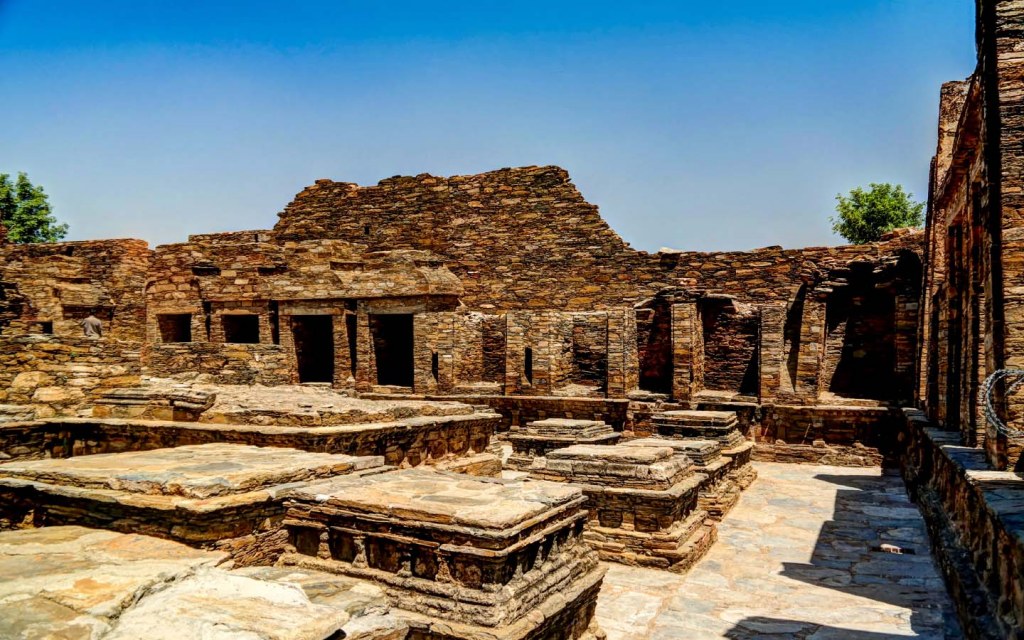For those who love exploring archaeological sites and have an avid interest in history, the ancient ruins of Takht-i-Bahi in Pakistan are nothing less than a hidden historical gem that’s waiting to be explored. Dating back to the 1st century AD, this sprawling stone complex is believed to be one of the most well-structures and well-preserved Buddhist monasteries in the world.
It is also considered the most impressive and exceptional Buddhist relic yet discovered in the region that was once the Kingdom of Gandhara. The remains of the neighbouring historical city of Sahr-i-Bahlol, located at a short distance from the archaeological site of Takht-i-Bahi in Pakistan, also attracts a lot of archaeologists, historians, students and tourists from all across the world.
According to the experts, the word ‘Takht-i-Bahi’ means ‘throne of water springs’ in Persian. The name seems fitting as two springs once used to flow on the top of the mountainous range where the monastery was situated.
Let’s delve a little deeper into the location and history of Takht-i-Bahi monastery, the oldest Buddhist ruins in Pakistan.
Location of Takht-i-Bahi in Pakistan

The remains of Takht-i-Bahi Buddhist monastery are located in the mountainous range some 15 kilometer the modern-day city of Mardan in the province of Khyber Pakhtunkhwa. The city of Peshawar, which serves as the capital of Khyber Pakhtunkhwa, is located at a distance of 80 kilometres from this stone complex.
The monastery is situated at around 500 feet on top of a small mountain. Meanwhile, the ancient fortified city of Sahr-i-Bahlol, which dates back to the same era, sits right next to Takht-i-Bahi. A modern village by the same name also exists nearby. The ruins are just 2 kilometres away from the main bazaar in the area.
The area surrounding the archaeological site is mostly used for agricultural purposes, with wheat, sugar cane and vegetables being the major crops in the region.
Although the area, including the village, were once considered remote locations, the growing popularity of Sahr-i-Bahlol and Takht-i-Bahi in Pakistan has led to the development of roads and parking areas. Moreover, quite a few hotels and guest houses have also popped up in the vicinity to facilitate foreign and domestic tourists alike.
History of Takht-i-Bahi in Pakistan

The Takht-i-Bahi inscriptions refer to Gondophares I, the founder and most powerful king of the Indo-Parthian Empire. Therefore, it is widely believed that Takht-i-Bahi Buddhist monastery was built at least 2,000 years.
Experts believe it started out as a small, singular structure in the Indo-Parthian Kingdom. However, over the next 800 years, the site developed into a vast and influential complex comprising monasteries, and stupas. As the popularity and influence of Takht-i-Bahi grew in the region, more monastic chambers and a temple complex were added to the premises.
This monastery was supported by the neighbouring city of Sahr-i-Bahlol. The remains of the ancient city suggest the fortified area was home to the followers of Buddhism. The residents used to carry food and other offerings for the monks residing in Takht-i-Bahi on a regular basis.
During the 5th and 6th century AD, when hundreds of Buddhist temples and monasteries were being destroyed by the Huns of Central Asia on a mission to expand their empire, Takht-i-Bahi in the heart of Gandhara civilization remained largely unaffected. The location of the Buddhist complex, which wasn’t easy to access, kept it safe from the invaders.
However, even though the site survived an invasion and subsequent destruction, it was gradually abandoned in the 7th century AD. Experts believe it was because of the dwindling donations and offerings that the monks began to leave the historical sites.
Takht-i-Bahi in Pakistan was only rediscovered in the early 1900s and the excavation work began in 1907. The presence of Buddhist statues, relics and other artefacts indicated the site didn’t suffer any attacks or raids even after being abandoned.
Architecture of Takht-i-Bahi

The architecture of Takht-i-Bahi Buddhist monastery in Pakistan includes four main structures:
- The Stupa Court located in the central courtyard
- The monastic chambers comprising individual cells for monks along with dining areas and assembly halls
- A temple complex that was constructed during the later years
- A monastic complex comprising small, dark cell for Tantric meditation
All the structures at Takht-i-Bahi are made out of local stone and mud.
UNESCO World Heritage Sites in Pakistan
Pakistan is home to six UNESCO World Heritage Sites and the Buddhist ruins of Takht-i-Bahi and Sahr-i-Bahlol are one of them. The famous Buddhist complex in Pakistan was added to the list in 1980.
The other UNESCO World Heritage Sites in Pakistan include the ruins of Mohenjo-Daro, the archaeological city of Taxila, the magnificent Lahore Fort and Shalimar Gardens, Makli Necropolis and Rohtas Fort.
Apart from these places, the country has also nominated a number of monuments with both cultural and historical significance to be designated a Heritage Site – including the stunning Shah Jahan Mosque in Thatta, Sindh.
Meanwhile, if you are a history buff or are looking for historical places to visit in Pakistan, make sure to check out some of the hidden historical gems in Lahore you probably didn’t know about. Moreover, you can also take a look at our list of historical forts in Pakistan and include some of them in your travel itinerary.
Stay connected to Zameen Blog for more information about tourist destinations in Pakistan. You can send us your questions and suggestions on blog@zameen.com. To receive updates about developments in the real sector of Pakistan, subscribe to our newsletter on the right.



